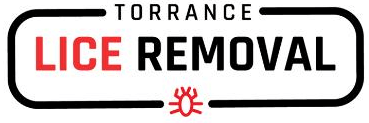How do you get lice? Here’s who is most susceptible, and the truth about how it spreads
If you’ve ever parented elementary school-aged children, you know that a call you want to avoid is one from the school nurse notifying you that your child has been exposed to head lice.
If such a call has already come, take comfort in knowing you’re not alone. “There are between 6 to 12 million infestations of head lice each year in the United States alone,” says Dr. Sara Ritchie, a pediatrician and clinical assistant professor in the department of pediatrics at the Medical University of South Carolina.
While she acknowledges how inconvenient the little pests can be when it comes to having to wash all clothing and bedding and inspect the rest of the family, she explains that discovering that a child has lice is nothing to be embarrassed about. “Having head lice is not a reflection of a person’s cleanliness,” she says. “Lice do not discriminate based on socioeconomic circumstances.”
What are lice?
Head lice are parasitic insects that are about 2-3mm long (“think sesame seed size,” advises Ritchie,) that can be found on the head, eyebrows, and eyelashes of people. “Scientifically known as Pediculus humanus capitis, head lice feed on human blood and live close to the human scalp,” says Dr. Jason Nagata, a pediatrician at UCSF Benioff Children’s Hospital in San Francisco. They also lay eggs, called nits, at the base of any hair shaft, which usually hatch within a week to 9 days.
Nagata says that if you have head lice, you’ll eventually become itchy on your scalp and around your neck and ears. This itching can be an allergic reaction to lice bites or may be due to becoming sensitized to lice saliva – something that doesn’t happen right away. “Itching might not be experienced until 4-6 weeks after infestation,” says Ritchie.
As tempting as scratching any itch can be, it’s better to avoid the practice. “Scratching due to itching can lead to skin irritation and bacterial infections,” cautions Nagata.
How do you get lice?
Head lice transmission usually takes place through direct head-to-head contact with an infested individual, “which frequently occurs during activities like sports, sleepovers or other playful interactions that involve close contact,” says Nagata. He says that sharing personal items such as clothing, hats, hair accessories, combs, brushes or towels can also contribute to the spread, as can using the same blankets or pillows – but transmission by such means is far less common.
What’s more, pets do not transmit head lice, and lice do not infest the environment. “Therefore, contrary to common misconceptions, personal hygiene and living conditions have no bearing on lice transmission,” says Nagata.
Ritchie explains that it’s also worth noting that lice “crawl” from one host to another – “they don’t jump or hop,” so being near someone with lice won’t risk infestation unless you come into direct contact with them or an item that has lice on it.
And while some people think that hair color or dye treatments can keep lice at bay, Ritchie says this isn’t so. “Lice use hook-like claws to grip the hair, so dyes do not affect their ability to do this,” she explains.
Why do little kids get lice so easily?
While lice certainly seem more common in kids, Nagata says the tiny insects infest children and adults alike. He explains that head lice infestations are most frequently observed among children in preschool and elementary school because nurses check for them there and “children engage in frequent head-to-head contact through play, sports, and various activities.” What’s more, “the school environment, characterized by close proximity and shared spaces, further facilitates the spread of head lice among children,” he adds.
This means parents and siblings of young children may also get lice when they come in close contact with each other at home. “Any infestations should be reported to school nurses and other known close contacts right away,” advises Ritchie. This will prevent further spread and can lead to recommendations to safely and efficiently deal with the problem at home.

